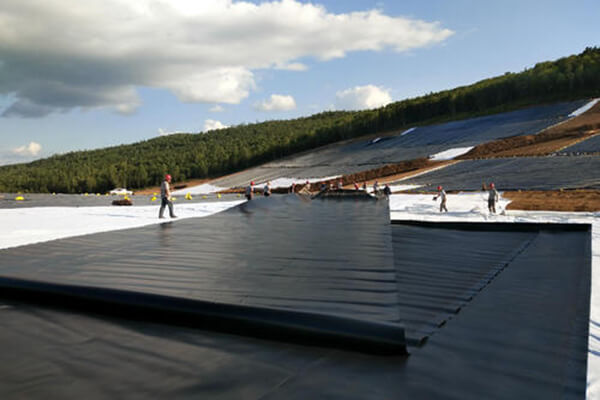Artificial lake seepage prevention method
Artificial lake seepage prevention methods generally include reinforced concrete waterproofing, clay waterproofing, and composite geomembrane waterproofing methods. The following three methods are introduced respectively.
1. Reinforced concrete is self-waterproof.
Reinforced concrete self-waterproofing is to use the impermeability of reinforced concrete to prevent water seepage and damage the foundation. The concrete is poured evenly during construction, avoiding analysis, sufficient vibration, strengthening maintenance, strictly controlling the dust ratio, and requiring the thickness of the substrate. Generally, the thickness of the substrate is more than 250mm This approach is suitable for the artificial lakes with overall rules and small water surface seepage prevention projects. The disadvantages are high cost, complex construction technology, and waterproof coatings are required after the reinforced concrete structure is completed.
2. Clay waterproof.
Clay waterproofing is the use of clay materials with low water permeability, laying a certain thickness of the clay, and using mechanical or artificial compaction methods to exert its anti-leakage performance. This construction method is conducive to areas with high-quality clay and is conducive to ecological exchange. However, for large and medium-sized cities, the cost of mining high-quality clay is high, the amount of earthwork is large, the original ecology is damaged, and it is difficult to prevent penetration at the junction with the revetment.
3. The composite geomembrane is waterproof.
Composite geomembrane is a new type of geotextile in our country. It started late but has a fast development speed. Especially after the reform and opening up, with the rapid development of the national economy, geotextiles are increasingly used in water conservancy projects. The artificial lake uses composite geomembrane as an anti-seepage material, which has the characteristics of high strength, low cost, and simple construction technology. It is widely used in water landscape construction all over the country. This time mainly introduces the application analysis of geomembrane waterproofing technology. The materials used for geomembrane are mainly polyethylene and polyvinyl chloride. The selection of geomembrane materials is mainly based on the following points

(1) Mechanical properties: Geomembrane is only used for seepage prevention, and its stress and tensile strength are not important indicators of the material. The selection should consider the material’s tensile allowance during the construction of this technology.
(2) Integrity: Geomembrane is connected between single sheets to form a whole. General PE film can only connect two films by heat welding. In addition to heat welding, PVC film can also be bonded with adhesive.
(3) Economical: The proportion and unit price of PE film and PVC film are more economical than other waterproof materials, and they are easy to buy in the market.
